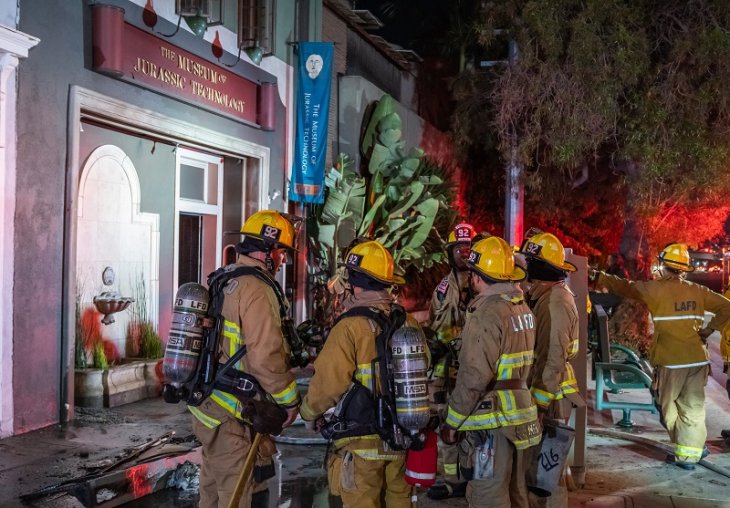A significant warming trend began in Southern California Monday, generating triple-digit temperatures in Los Angeles County valleys, National Weather Service forecasters said.
The NWS attributed the warming trend to an upper-level high-pressure system strengthening over Northern California and Nevada combined with “a weak northerly wind component at the lower levels.”
“Widespread triple-digit heat is expected across the lower mountains, Antelope Valley and interior valleys,” according to an NWS statement.
Today, an increase in monsoonal moisture will potentially lower temperatures a few degrees across Los Angeles and Ventura counties, but the increased humidity “will lead to significant discomfort,” it said.
In fact, the discomfort started Monday. An excessive heat warning issued by the NWS was in effect from 10 Monday morning until 10 Monday evening in the Antelope Valley, where highs ranged between 106 and 109 degrees, the NWS said. A slightly less serious heat advisory was in effect from 10 Monday morning until 9 p.m. Tuesday in the San Gabriel Mountains and the Santa Clarita Valley amid highs ranging from 95 to 106.
“This is a dangerous situation with an increased threat of life- threatening heat-related illness,” according to the NWS.
Forecasters urged people who work outdoors to save strenuous activities for the early morning or evening, wear light-colored, loose-fitting clothing, and drink plenty of water.
Above all, they said, be aware that “temperatures inside vehicles, even if the windows are partially open, can quickly rise to life-threatening levels. Never, ever leave people or pets in enclosed vehicles, even for a short period of time.”
Temperatures will stay the same in some communities Tuesday, climb in others by up to 4 degrees and decline by a few degrees in some areas, including Lancaster, where a high temperature record for a July 30 was matched Sunday, when temperatures reached 106 degrees, the same as in 2000.
Also in effect Monday along the L.A. and Orange county coasts is a beach hazards statement, which is a notch less serious than a high surf warning. It will expire Tuesday night.
The statement was issued in response to a long-period southerly swell generating higher-than-normal surf along south-facing beaches, along with strong rip and longshore currents.
“There is an increased risk for ocean drowning,” according to an NWS statement. “Rip currents can pull swimmers and surfers out to sea. Large breaking waves can wash people off beaches and rocks and capsize small boats near shore.”
Between this morning and tonight, surf will average 3-6 feet, forecasters said, and local sets of 7 feet are possible.’






















